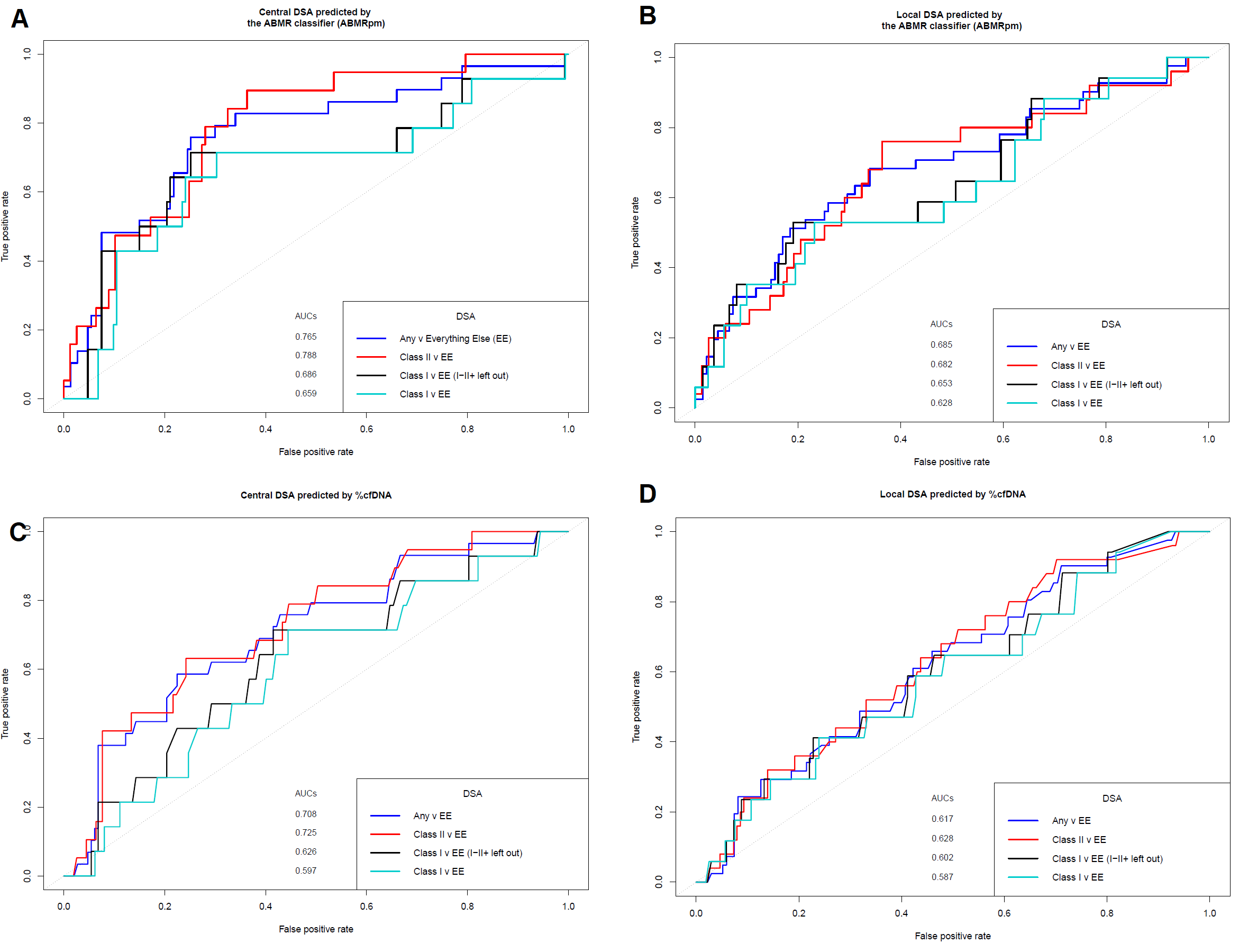Relationship Between %dd-cfDNA, MMDx Molecular Diagnoses, and Donor-specific Antibody in the Trifecta Study
1Alberta Transplant Applied Genomics Centre, Edmonton, AB, Canada, 2University of Wisconsin, Madison, WI, 3Natera Inc., San Carlos, CA, 4One Lambda Inc., West Hills, CA, 5., ., AB, Canada
Meeting: 2021 American Transplant Congress
Abstract number: LB 19
Keywords: Gene expression, HLA antibodies, Kidney transplantation, Rejection
Topic: Clinical Science » Kidney » Kidney Chronic Antibody Mediated Rejection
Session Information
Session Name: Late Breaking: All Organs
Session Type: Rapid Fire Oral Abstract
Date: Tuesday, June 8, 2021
Session Time: 6:00pm-7:00pm
 Presentation Time: 6:10pm-6:15pm
Presentation Time: 6:10pm-6:15pm
Location: Virtual
*Purpose: The Trifecta Study is a prospective multicenter investigator-initiated trial to evaluate the relationship between %dd-cfDNA and molecular biopsy findings at the time an indication biopsy as well as determining the relationship between %dd-cfDNA and DSA, measured either centrally or by the local center. (ClinicalTrials.gov # NCT04239703).
*Methods: The present analysis compared the %dd-cfDNA measurements by Natera to HLA antibody as well as MMDx microarray molecular diagnoses in 176 biopsies: 109 no rejection; 38 ABMR; 4 possible ABMR; 14 TCMR, 3 possible TCMR, and 8 mixed. Central HLA antibody assessment was performed at One Lambda and interpreted by Dr. Luis Hidalgo using local genotyping. Each center also provided local DSA assessment and the histology diagnosis.
*Results: The %dd-cfDNA was highly related to rejection in the biopsy (AUC 0.81), particularly active antibody-mediated rejection (ABMR) (AUC 0.82), and agreed more with MMDx ABMR than with histology ABMR (AUC 0.69; p=0.025). The association of %dd-cfDNA with pure T cell-mediated rejection (TCMR) was weaker (AUC 0.58). In 176 biopsies with DSA results recorded, DSA was negative in 136, positive in 30, and suspicious for nonspecific bead reactivity in 10. Molecular ABMR activity was frequently DSA negative, both centrally and locally, consistent with the increased recognition of DSA-negative ABMR. DSA associated with MMDx ABMR was usually class II. Because histologic ABMR requires DSA positivity for diagnosis, histology diagnosed fewer ABMR cases, but in DSA positive ABMR MMDx and histology usually agreed. Molecular ABMR classifiers predicted central DSA with AUC 0.77 (all) and 0.79 (class II) (figure 1A), and predicted central DSA better than local DSA (AUC 0.77 vs. 0.69) (figure 1B). The %dd-cfDNA predicted central DSA with AUCs of 0.71 (any DSA) and 0.73 (class II) (figure 1C). %dd-cfDNA predicted local DSA assessment less well than central DSA assessment (AUC 0.62 vs. 0.71) (figure 1D).
*Conclusions: There is a strong relationship between %dd-cfDNA, centrally-measured DSA (particularly class II), and rejection, particularly active ABMR. These relationships are stronger for MMDx than histology diagnoses, and for central rather than local DSA assessments. Many ABMR cases are DSA-negative.
To cite this abstract in AMA style:
Halloran PF, Hildago LG, Reeve J, Demko Z, Prewett A, Billings P, Truong J, Horn PVander, Group &TrifectaStudy. Relationship Between %dd-cfDNA, MMDx Molecular Diagnoses, and Donor-specific Antibody in the Trifecta Study [abstract]. Am J Transplant. 2021; 21 (suppl 3). https://atcmeetingabstracts.com/abstract/relationship-between-%dd-cfdna-mmdx-molecular-diagnoses-and-donor-specific-antibody-in-the-trifecta-study/. Accessed December 14, 2025.« Back to 2021 American Transplant Congress

